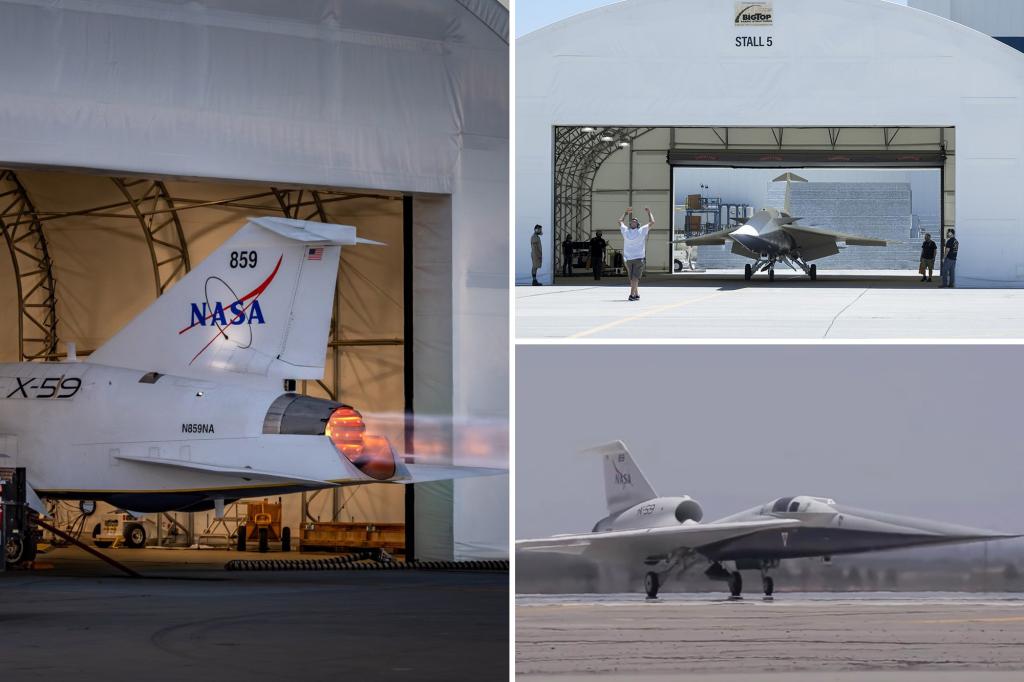Breakfast in New York, midmorning snack in London.
Taxi tests are underway on a highly anticipated supersonic plane designed to quietly break the sound barrier — and slash flight time between New York and London in half.
The X-59 jet, dubbed the “son of Concorde,” is one step closer to takeoff after the experimental aircraft taxied on a California runway at low speed using its own power for the first time on July 10, NASA said in a press release.
The ground maneuvers at the US Air Force’s Plant 42 in Palmdale mark the final series of trials for the 100-foot-long, 30-foot-wide jet before its maiden voyage, which is slated for sometime this year, according to the space agency.
“Over the coming weeks, the aircraft will gradually increase its speed, leading up to a high-speed taxi test that will take the aircraft just short of the point where it would take off,” officials said.
The high-tech plane, unveiled by NASA and Lockheed Martin last year, is the centerpiece of the space agency’s QueSST mission to produce a quieter sonic boom for communities below and revolutionize air travel, potentially cutting transit time down significantly for commercial flights.
It could possibly fly from New York to London flight in three and a half hours, the agency previously said.
The new aircraft’s innovative design and shape will cause it to produce a quiet “thump” sound as it reaches speeds of up to 925 miles per hour, officials said.
Supersonic flights have been banned in the US and other countries for the past half-century due to the thunderous sound generated when planes exceed the speed of sound — 767 miles per hour.
But the X-59’s thin, tapered nose is expected to break up shock waves that would cause the high-speed roar on a conventional aircraft, NASA previously boasted.
The latest innovation will succeed the British Airways Concorde, which reached speeds of around 1,350 miles per hour and completed its fastest transatlantic flight in just under three hours on Feb. 7, 1996.
The aircraft, which debuted in 1976, was plagued by costly maintenance and a fatal 2000 crash. It was retired from commercial service in 2003.
Read the full article here

